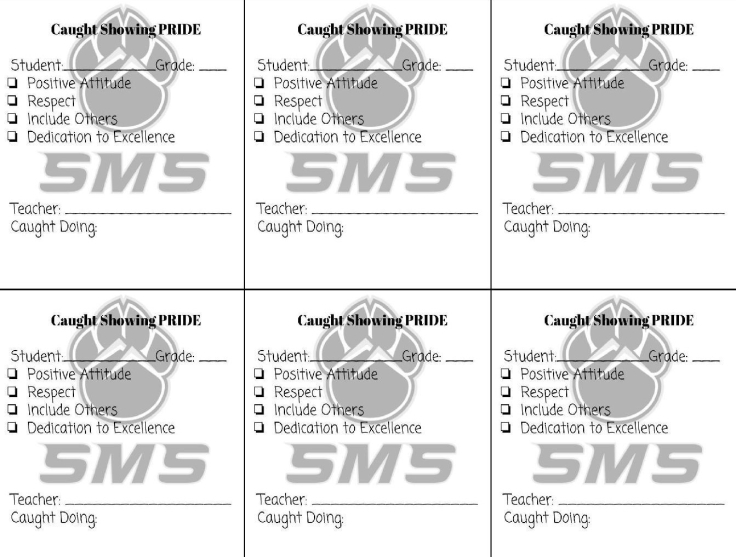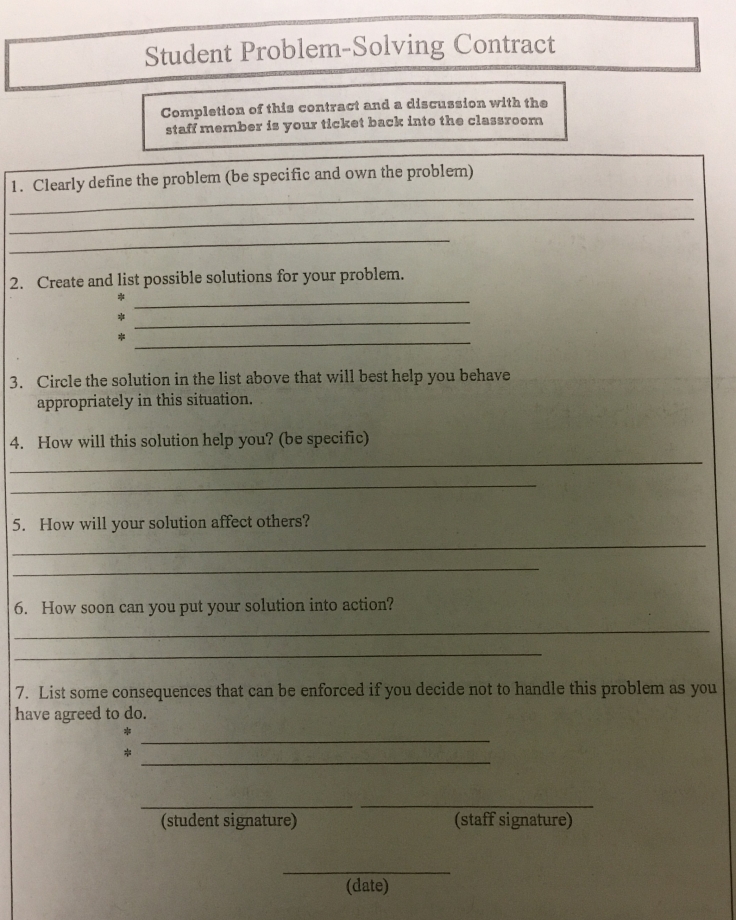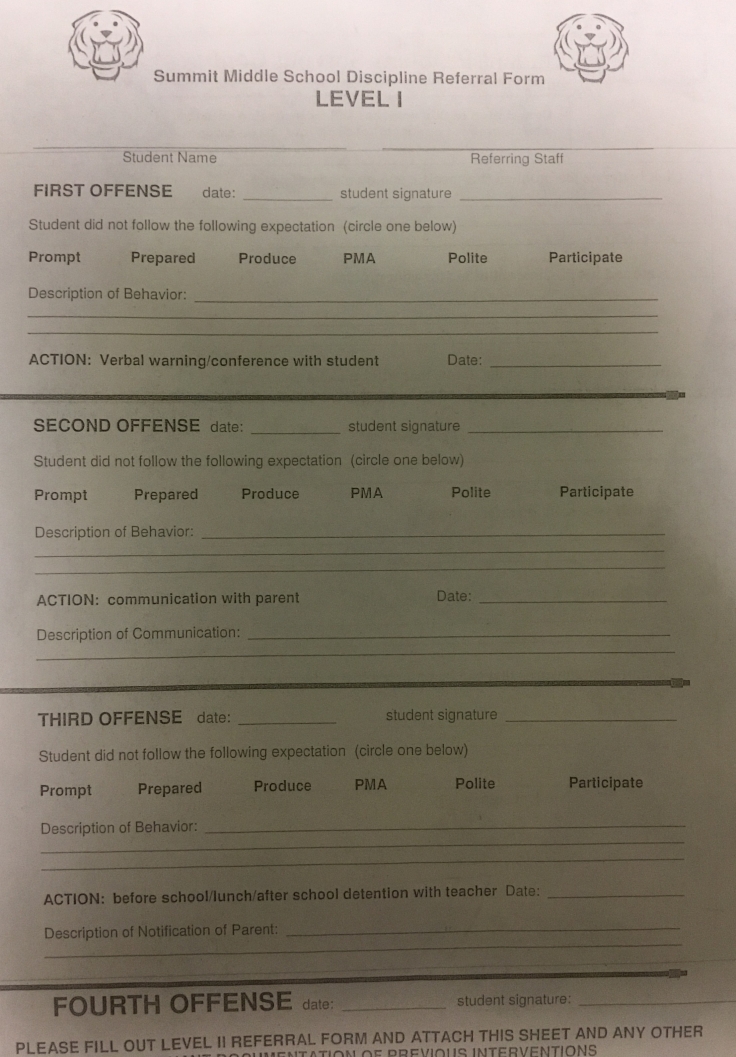Teachers establish a safe, inclusive and respectful learning environment for a diverse population of students.
In this quality standard, I will be reflecting on my application of quality standards A, D, and F.

ELEMENT A: ASAP, Fitness, Activity of the Day (predictable)
It seems valuable to establish a routine in my classes. In PE, this happens by having relatively the same schedule each day. When students first get out of the locker rooms, they know to look on the board for their ASAP- Active Soon As Possible. This is usually some sort of dynamic activity to get their muscles warmed up and ready for the day. Some days it is related to the skill we are teaching; other days it is simply a series of dynamic stretches and cardiovascular endurance exercises. After the ASAP is done and attendance is recorded, we bring students in to explain their fitness activity for the day. We vary these fitness activities between the five health-related components of fitness; muscular strength, muscular endurance, flexibility, cardiorespiratory endurance, and body composition. Finally, we move into the activity of the day. Whether this is gymnastics, basketball, or track, we have a large variety of sports we move through throughout our school year.
Standard II Element A asks that teachers strive for a predictable learning environment. By following the same routine daily, I am able to establish a predictable learning environment. The second half of this standard is that each student has a positive and nurturing relationship with caring adults and peers. While I cannot always control the actions of my students, I can control my interactions with them as the caring adult. PE offers a unique setting in which relationship building comes naturally. When students are playing games and working in teamwork settings, it is easy and fun to jump in and get to know them better. By coming alongside them in their joys and struggles with different game activities, I am able to understand them better as growing and developing people.
One thing I would love to work on improving in this standard is the peer-to-peer interactions. I know that I cannot fully control the actions and attitudes of my students, but I would like to create more opportunities for my students to begin to understand each other. Not only their friends but also their “enemies” and just the people that they are different than. If my students can begin to care for people outside of their friend groups and have respect for the people in the class at a mutual level, I would feel much more successful in my job than simply if I teach my students how to throw a ball well.
Element D: Adaptive PE
One of the classes I have had the opportunity to teach is the Adaptive PE class. In this class, I have four sweet students who have a range of different physical and mental disabilities that has placed them in their own class rather than assimilating in general PE classes. This class allows for specific strengthening focuses for these individuals rather than forcing them in with the masses to simply cope. I have enjoyed taking game days to learn basketball skills, throwing and catching skills, and teamwork skills. I also feel that this class has offered a unique opportunity to also help these students develop their personal fitness on an individual basis.
In this class, I teach two students with cerebral palsy. One of them is wheelchair bound and the other walks with ankle braces. The other two students are on the autism spectrum, one of which speaking very little English as it is a second language for this student. In this class, we are able to practice specific stretching exercises that help each student individually. For some, that looks like a space to burn some energy. For others, that looks like an opportunity stretch extremely tight muscles. For all of them, this is core strengthening and stability. In a general PE class, the needs of these students might be swept away in the chaos that ensues from having 40-50 students working through activities.
In my small adaptive PE class, I have learned a significant amount about teaching students with disabilities as well as how to modify for these students. Each day offers new learning experiences in how to best support them to reach their goals as well as an opportunity to try something new. I began my school year feeling that I would like to include slightly more programming into my semesters with these students. As the year has progressed, however, I have found that my students with autism crave the routine of our class and my students with cerebral palsy benefit significantly from strength and flexibility work. We have had the opportunity to get outside and try snowshoeing and sledding as well as enjoy nature walks. In the past week, we have also been able to assimilate into the general education class for gymnastics.
Element F: PRIDE and Problem Solving Contracts, the Process

As a form of PBIS in our school, we give students PRIDE slips for positive behaviors. PRIDE is an acronym for Positive Mental Attitude, Respect, Inclusion of Others, and Dedication to Excellence. On the PRIDE slip is a space to write students names, the positive behavior they were caught doing, and the grade they are in. There is also a small space at the bottom of the ticket for an explanation of the positive behavior the student was caught doing. We are encouraged to give this portion to students blank and allow them to write in and recognize their positive behavior. I try to pass out a few of these each week so that I am intentional about recognizing the good that students do, not only feeling brought down by negative behaviors. Encouraging my students to commit to excellence is one of my biggest challenges and greatest joys of being a PE teacher. Using the PRIDE rubric, we determine if students are out of line. If needed, we will give them problem-solving contracts which simply initiates the process of talking to their parents and the school dean.

I have followed the problem-solving contract model in my students who have behavior issues. For many of the students who are breaking expectations set out in the PRIDE rubric, a problem-solving contract is usually as far as we get to. Once students own their behavior and begin thinking about steps to move out of that behavior, they usually do. Occasionally, I have students who need slightly more encouragement. In this, when a student receives their second “strike” or second problem-solving contract, I will contact their parents. This is usually done via email in which I will carbon copy (cc) our assistant principal in charge of discipline. After the third strike, this is a referral, which is sent directly to the assistant principal without going to the parents. It is highly beneficial to share these guidelines and hold kids to them. It helps keep myself and my students accountable to the expectations that are set.

Teaching at the middle school level, often times my 8th grade students feel that they are “too cool” for PRIDE slips. In an effort to encourage students to understand how valuable these are, I want to be sure and always speak positively about PRIDE slips and the program, as well as adding some sort of a trade that students can exchange slips for open gym time during lunch or the opportunity to “buy” a free game day if they can work together as a class. I would like to start each unit with a reflection on one of the categories of PRIDE and keep it as our focus for the unit. We assess PRIDE at the end of each unit in a self-reflection for students, but we do not always address it at the beginning of units.



